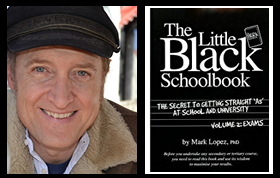Dr Mark’s The Meaning in a Nutshell
James Mc Teigue (director), the Wachowskis (writers), V for Vendetta (2005)
The film V for Vendetta (2005) was directed by James Mc Teigue and adapted for the screen by Larry Wachowski (later known as Lana Wachowski) and Andy Wachowski (later known as Lilly Wachowski) from the graphic novel V for Vendetta written by Alan Moore and illustrated by David Lloyd (1982−1989). It represents an anarchist political fantasy of a futuristic political scenario where politics has polarised into a struggle between the extremes of fascism and anarchism, a struggle in which the anarchists are eventually victorious.
The film reflects the concerns of the anarchist graphic novel writer Alan Moore that trends in right-wing politics during the 1980s could lead to a fascist dictatorship that has a policy of homogenising the population, purging dissent and differences in ethnicity or sexual orientation. In this sense, the film represents a protest against what Alan Moore’s interprets to be the policies of Margaret Thatcher’s Conservative government (1979−1990). It also expresses his fervent opposition to the racist National Front, a notorious political group that achieved notoriety during the same era and was frequently attacked by the extreme Left, and others, when it staged public rallies and marches. Under the influence of the Wachowskis, the film also represents a protest against the Republican administration of President George W. Bush and its suppression of some liberties after 2001 due to its security measures to conduct the War on Terror against jihadist Islamic fundamentalism. In this context, the film protests against the Right, accusing it of oppressing non-whites, homosexuals and lesbians, Muslims and political dissenters on the Left.
The film presents anarchism and anarchists as offering a way to overthrow the fascist state and achieve freedom for the people. This is done through utilising the anarchist strategy of the ‘propaganda of the deed’, which involves bombings and assassinations intended to destabilise an oppressive regime and ignite a revolutionary consciousness in the people, who then rise up in numbers too great to suppress to overthrow the fascist regime and establish a more equal and more just society. The film implies that through instigating the revolutionary process that brings freedom, anarchists should be celebrated as heroes and saviours.
The film features the lone anarchist revolutionary known as ‘V’. He is presented as a virtuous friend of the people. This is established at the outset when he rescues young Evey from being raped by members of the regime’s secret police. He is a practitioner of the propaganda of the deed. He hunts down and assassinates leaders in the fascist regime, especially those who tortured him when he was arrested and placed in a concentration camp. The character V is out to impose his revenge on all who hurt him, individual leaders as well as the fascist regime itself. As a lone revolutionary, he succeeds in igniting a revolution and overthrowing the oppressive fascist regime. The character V distributes thousands of Guy Fawkes masks to give the uprising a uniform. In addition, he arranges to blow up Parliament to precipitate a revolution. Anarchists believe that if civil disobedience is practised by enough people simultaneously, the oppressive apparatus of the targeted regime would become overloaded and dysfunctional. At this point, the regime is vulnerable to revolutionary overthrow. Images of mass civil disobedience triumphantly conclude the film.
Student resources by Dr Mark Lopez
© Mark Lopez 2021 All RIGHTS RESERVED
The purpose of the concise notes of Dr Mark’s The Meaning in a Nutshell is to provide much needed help to students seeking to unlock the meaning of the texts with which they have to deal. (More elaborate notes are provided in lessons as part of my private tutoring business.)
Subject: V for Vendetta meaning, V for Vendetta themes, V for Vendetta analysis, V for Vendetta notes
